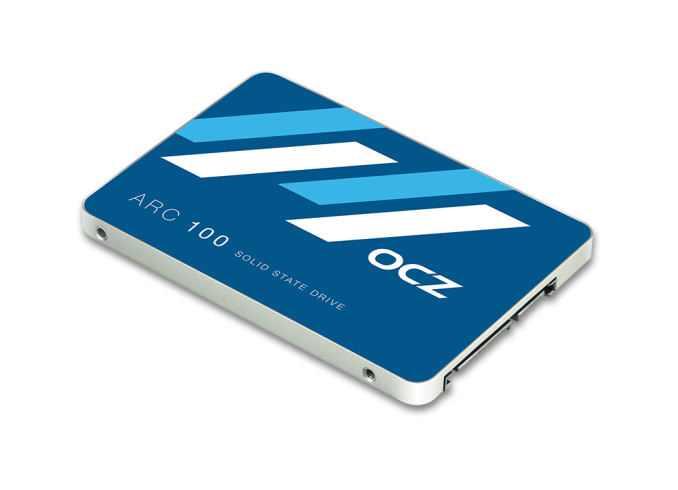OCZ Releases Important Firmware Updates for ARC 100 & Radeon R7 SSDs
by Kristian Vättö on February 9, 2015 4:18 PM EST
A little less than two weeks ago OCZ released mandatory firmware updates for the ARC 100 and Radeon R7 SSDs, so I figured I would give the owners a heads up along with a more detailed explanation of the contents of the update.
The first and only observed issue is related to DRAM corruption. In the old firmware a DRAM refresh could happen during a what is called the training period, which is the duration of DRAM timing calibration during the controller power on. That lead to potential DRAM corruption that could jeopardize the drive's reliability, so the new firmware simply moves the DRAM refresh outside of the training period. This is a rather corner case issue and only applied to the 480GB ARC 100 and Radeon R7, but it's an important fix nevertheless.
The second fix in the new firmware is improved robustness of uncorrectable error handling. This is a fruit of OCZ's robustness testing and improves the firmware recovery in worst case scenarios.
The third and final fix improves read-retry on bad block list, which enhances the security of the bad block list. As the list is stored in NAND like any other data, it's susceptible to the standard NAND failures, so the update puts improvements in place in case the NAND blocks storing the bad block list went bad and required read-retry routines. This is more of a theoretical "what if" scenario, but as always any and all reliability improvements are welcome.
Basically, the error handling and bad block list enhancements were engineered for the upcoming Vector 180 and are now making their way into the existing Barefoot 3 based SSDs. Neither of them are related to any known issues, but are simply a part of OCZ's continuous firmware development and support. The Vertex 460A will also be getting the update with more robust error handling in the near future.
The update carries a version number 1.01 and is available on OCZ's website.










16 Comments
View All Comments
hansmuff - Monday, February 9, 2015 - link
Clickbait with zero explanation. "the update puts improvements in place in case the NAND blocks storing the..." that entire thing is a load of crap. Clickbait. I hope you discontinue this sort of thing, unless of course you just seek to be another mediocre "news" site in the sea of thousands.Mr.r9 - Tuesday, February 10, 2015 - link
What? Kristian clearly details what and this update is required. Go read the second paragraph idiot.Flunk - Tuesday, February 10, 2015 - link
When this website starts off with titles like "6 ways to make a woman fall in love with you" that lead to articles about cpus, then maybe we'll take you seriously.Daniel Egger - Tuesday, February 10, 2015 - link
Paragraph 1 and 2 are actually contradicting each other:"First things first, the word critical in this context doesn't mean that the drives are subject to a major issue or bug that turns the drive into a brick, so there's no need for mass hysteria here."
"That lead to potential DRAM corruption that could jeopardize the drive's reliability, [...]"
DRAM corruption means that the drive is potentially writing incorrect data to the drive hence jeopardizing data integrity -- in my book that is maximum one notch better than bricking the device. If a device is bricked I know it's time to get a new drive and fetch that backup, if the data is silently corrupted things might end up much worse...
mapesdhs - Tuesday, February 10, 2015 - link
Simple fact is, 'critical' was poor choice of word for the article title. Given the distinctlyferocious nature of many of those who read tech sites, it's unfair to post something
which many will choose to interpret as being an indication that something has gone
fubar with an OCZ SSD. This sort of thing can create a lot of unwarranted FUD. At
the very least, edit the title to make it more sensible.
Vector 180 due out in about 6 weeks btw.
Ian.
Jsec42 - Wednesday, April 27, 2016 - link
Well, to be honest something did go haywire with the ARC100 480gb. I know cuz mine semi-bricked itself as a result of the aforementioned firmware bug. I almost thought the drive was dead until I found out about the firmware update, and after I finally managed to get the firmware utility to boot on my system, installed the firmware, and reset the drive, it is working better than ever! I wasn't too happy about losing my data, but I find it hard to knock a product as defective when the manufacturer releases an update to fix a major bug, so it is back in use now.